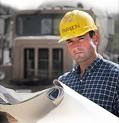The title of the book is Google Sites and Chrome for Dummies and the authors are Ryan Teeter and Karl Barksdale. Ryan Teeter served as the consultant of the National Business Education Association, businesses, and school districts on Google Apps implementation. He worked as an External Training Specialist at Google in Mountain View, California . Karl Barksdale previously worked as a Development Manager for the training and certification team at WordPerfect Corporation and a Marketing Manager in the Customer Products division. He is also an instructor at the Utah Academy of Sciences.
The book has 428 pages and the publisher was Wiley Publishing, Inc. Published in the year 2009 in Indianapolis, Indiana. The Number 1, Bestselling Computer Book Series.
Google Sites (http://sites.google.com/) is a free online service. It gives a great online information. Google Sites can help you, your friends, and your co-workers to communicate or collaborate to your activities. The Google Sites online services such as Google Calendar (http://calendar.google.com), keeps track of your events. You can easily add new calendar items and access them from anywhere, including your BlackBerry or iPhone. In Calendar, you can create separate calendars for your personal and team-related events and share them with other members of your team, Google Docs (http://docs.google.com), create, edit, and store documents, spreadsheets, and presentations. One of the good things about Docs is that you can share your documents with other team members and work on them at the same time. This way, any changes you make are automatically updated and everyone else can see them right away, Blogger (www.blogger.com), which lets you create your own blog, Picasa Web Albums (www.picasa.com), where you can share your photos online.
Google Chrome (www.google.com/chrome) is a free Web Browser that can be downloaded to your computer and to access websites, including Google Sites. Chrome takes advantage of new technology, without using as much computer memory as other browsers, this means Chrome starts immediately after you open it and new tabs appear just as quickly. Gmail and Google Sites, run much faster in Chrome than in other browsers. One of the unique features of Chrome is the Omnibox. The Omnibox combines the browser's address bar, search bar, and search from other Web Sites into one location. Chrome even protects you from people who would steal your information or install bad sotfware onto your computer. Every time you use it, Chrome automatically downloads a list of Web Sites that Google knows are bad. They either try to get you to give up your personal information or load software to track your behavior. Whenever you come across a bad site, Google blocks the screen and helps you navigate away. If you're certain the site is legitimate, there's an option to continue at your own risk.
The book has 428 pages and the publisher was Wiley Publishing, Inc. Published in the year 2009 in Indianapolis, Indiana. The Number 1, Bestselling Computer Book Series.
Google Sites (http://sites.google.com/) is a free online service. It gives a great online information. Google Sites can help you, your friends, and your co-workers to communicate or collaborate to your activities. The Google Sites online services such as Google Calendar (http://calendar.google.com), keeps track of your events. You can easily add new calendar items and access them from anywhere, including your BlackBerry or iPhone. In Calendar, you can create separate calendars for your personal and team-related events and share them with other members of your team, Google Docs (http://docs.google.com), create, edit, and store documents, spreadsheets, and presentations. One of the good things about Docs is that you can share your documents with other team members and work on them at the same time. This way, any changes you make are automatically updated and everyone else can see them right away, Blogger (www.blogger.com), which lets you create your own blog, Picasa Web Albums (www.picasa.com), where you can share your photos online.
Google Chrome (www.google.com/chrome) is a free Web Browser that can be downloaded to your computer and to access websites, including Google Sites. Chrome takes advantage of new technology, without using as much computer memory as other browsers, this means Chrome starts immediately after you open it and new tabs appear just as quickly. Gmail and Google Sites, run much faster in Chrome than in other browsers. One of the unique features of Chrome is the Omnibox. The Omnibox combines the browser's address bar, search bar, and search from other Web Sites into one location. Chrome even protects you from people who would steal your information or install bad sotfware onto your computer. Every time you use it, Chrome automatically downloads a list of Web Sites that Google knows are bad. They either try to get you to give up your personal information or load software to track your behavior. Whenever you come across a bad site, Google blocks the screen and helps you navigate away. If you're certain the site is legitimate, there's an option to continue at your own risk.
The strong points of this book are, it helps you understand and use the Google tools you need if you want to build your own site. It would be interesting to know that you can make your own website, and post any subject that you are interested in online. You can have new friends and acquaintances who would be interested to read and follow you blogs, and who may want to post some comments that may give you additional ideas or materials that can improve your subject.
Overall, this book is the best for me, having been explained by the authors clearly the Google tools step by step. I did not find any negative factors or weak points about it.



